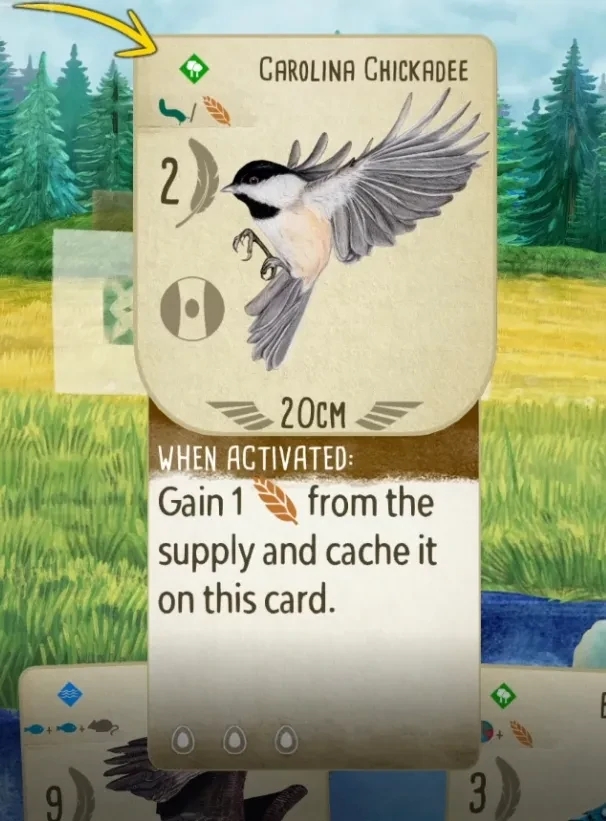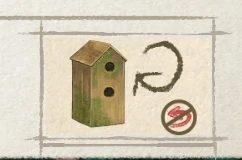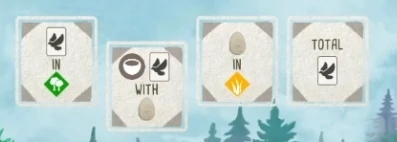Wingspan is an exciting concept from top to bottom. It involves all manner of birds in either a card-driven board game or a cross-platform video game–both essentially based on the same original concept. Bird lovers want everything to do with this game, me included, and with the different ways to play, who can resist? Still, after my initial foray into Wingspan, I was thrilled with the bird trivia and different mechanics and rules, but it was a little confusing.
If you’re more of a casual gamer like me, you might just want to flap your wings and move on. Don’t worry about it, the game is actually very enjoyable once the rules are clear, and is accessible to everyone. So, in this article, I’ll tell you the exact rules of how to play Wingspan. I’ll be focusing on the digital version, since the tabletop and digital version rules are the same! That said, this tutorial is mainly intended as a reference but should clear some things up while you’re playing. So, let’s get started.
Table of Contents For This Quick Guide to Wingspan
What Comes First? (Neither Chickens Nor Eggs.)

The most important aspect of Wingspan is that it is, in its primary form, a card game (it’s mostly the same in its video game version just digitally represented.) You play the game against 1-4 opponents, or against a computer opponent/s if you’d like.
At the very beginning of the game, and between each turn, you’ll see your progress through blue cubes (action cubes) separated by goal cards, like the four squares between rounds–this is displayed in the image above. I’ll discuss goals later, but this is good to know if you’re just wondering about the structure of the game. It’s pretty straight forward, in round 1 and two you get 7 turns, round 3 you get 6 cubes, and round four 5 cubes. This will be the time allotted to pull off any moves to get the most points by the end.
Prelimary Info (Also the Most Useful) of Birds in Wingspan

This is a bird card I’ll be using as an example. At the top you’ll see the icons for the habitats this bird is able to be played in. This one is green for the forest–a bird can only be played in the habitats listed on it. Playing cards is simple, choose a habitat, and a space to place the card for playability throughout the game. There are three habitats you can choose from, although some cards are limited to only one or two habitats. You can either focus on one habitat or diversify with what’s available. Here are the icons you can click for the habitats that appear on the left.

You’ll start off the first round picking 5 items or cards. The cards contain either a real species of bird, like a Carolina chickadee for example, or a selection of food from the bird feeder. I advise starting off strong with at least 3 cards and 2 food, since food is replaceable but birds are a little harder to come by. I will show you what to look for in bird cards and food in the next section. Note: this might all depend on what birds the randomized selection offers you, so you’ll have to look at a variety of features on the birds to determine what your strategy is.
Food for the Birds
Below the habitat icons, you’ll see two additional new icons. On the Carolina chickadee card I included above, you’ll see icons representing bugs (invertebrates) and grain (seed). Food is acquired from dice in the forest habitat. Food is necessary to complete most bird actions and you will need to keep track of what you pick from the birdfeeder to keep the birds ready.
If food runs out in the birdfeeder, you can click the birdhouse and the food will be replenished. Here are some images of the birdfeeder, as well as a picture of the activatable birdhouse which will reroll for new food if you click it when you are down to one food option in the birdfeeder.


Quick Word on Goals (And Gulls!)

You will get points for what you can accomplish based on the goals in the upper right corner of the screen in each round. It helps to know the bird card markers to reach these goals. For example, this goal in the first image above means you will get points for birds with bowl nests with an egg. Before that, birds in the forest habitat. Etc. Actually, almost everything here is dependent on your birds! So, use the markers to determine what you need to know. Oh and gulls, particularly seagulls, they’ll eat anything, which brings me to the next section.
Actions, Points, and Bonus Cards in Wingspan
Everything you do is limited by the number of actions you have left in your turn. You have 7 turns per round to do what you want to do. Although in my experience, it seems that some actions burn through a whole turn. Underneath the food icons, you’ll see here in this screenshot I’ve taken a “2” next to a feather. The “2” represents this particular bird’s points. This simply represents the amount of points the bird will be worth at the end of the game. While it is important to have higher points, it is not the most important aspect–but still pretty important.
Other features on the card include the type of nest, shown on the Carolina chickadee by a brown circle with a line and hole in the middle–a cavity nest. Nest types mostly only apply to bonus cards that activate powers or effects based on nest types–cavity, platform, ground, bowl, and wild.

Also note, the wingspan of the bird, represented by the wing lines and the measurement “20cm” here. This is also a property that activates bonus cards. Below that, where it says when activated in brown with the description below, this is the birds power. Powers occur either when activated, when played, or once between turns.
Eggs, One of the Most Powerful Bird Abilities

Also, let me tell you about a very important thing, EGGS. I’m talking about the eggs at the bottom of the card. Laying an egg is a good way to play birds. If you’re wondering when, where, and how to use eggs, pay attention to where you place the bird. The tabs, pictured in the space behind the card–like in the images below–will determine what exchanges are necessary to acquire the number of eggs available (both of these options pictured transform into one egg, which is why there is only one egg on each tab.)

Gee, Are My Arms Tired!

Final note: I really recommend at least doing several computer rounds to get a feel for how the game works. If you’re playing the physical card version, it might take you a moment or two to get through the manual too. Do not worry too much at first about strategies, although there are a few basic ones like rationing rare foods or choosing certain birds (actually this second one is kind of important but too general to really cover.) Mostly, just focus on the goals and what you can accomplish with what you have and see how the game plays out. It can be really fun just experimenting because the rounds are fairly quick! Regardless, strategy is totally accessible with practice. You might not win every time, but knowing the rules are very helpful overall!
And, that’s pretty much it. There are tons of birds and scenarios to explore in this game. If you like birds, you will love this game–it’s very relaxing if you enjoy the aesthetic also. These are just my tips on how to get started. You may need to see what the patterns are for many scenarios to determine what strategy works best. Knowing how things work goes a long way.
If you’d prefer a more audiovisual approach than this, I made a playthrough video of the entire tutorial for the digital game on YouTube, it’s clickable above. I’ll keep an eye on this article to see if I missed anything. Thanks for reading this website, if you’d like to learn more, have a look around.




